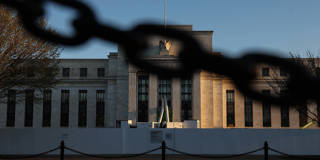Everyone has become so inured to massive central-bank interventions in markets that no one realizes just how unusual the latest banking crisis and response has been. But the time has come to consider whether monetary policy is the systemic force that created systemic vulnerability in the first place.
CHICAGO – As institutional mea culpas go, the US Federal Reserve’s recent report on the events leading up to Silicon Valley Bank’s failure is surprisingly self-critical, detailed, and informative. While pointing out that SVB did not manage its risks appropriately (when its own models showed that it was taking too much interest-rate risk, the bank changed the model’s assumptions), the report also castigates supervisors for failing to appreciate SVB’s growing vulnerabilities or pushing it to fix them. The Fed also flags regulatory changes that SVB exploited to avoid closer scrutiny. But the report does not address a crucial matter: the Fed’s monetary policy.

CHICAGO – As institutional mea culpas go, the US Federal Reserve’s recent report on the events leading up to Silicon Valley Bank’s failure is surprisingly self-critical, detailed, and informative. While pointing out that SVB did not manage its risks appropriately (when its own models showed that it was taking too much interest-rate risk, the bank changed the model’s assumptions), the report also castigates supervisors for failing to appreciate SVB’s growing vulnerabilities or pushing it to fix them. The Fed also flags regulatory changes that SVB exploited to avoid closer scrutiny. But the report does not address a crucial matter: the Fed’s monetary policy.